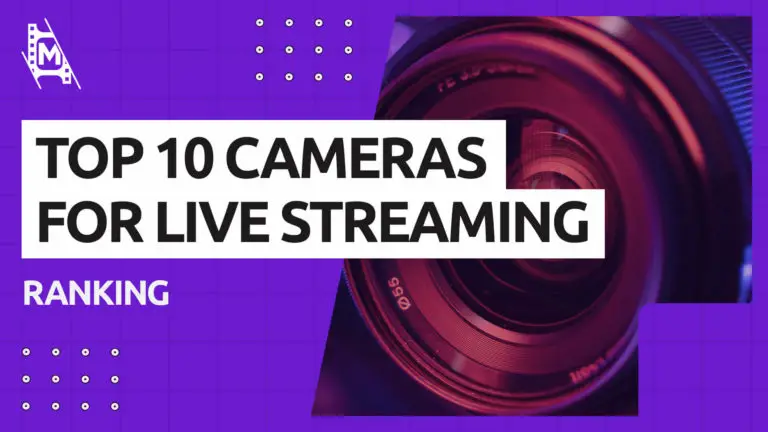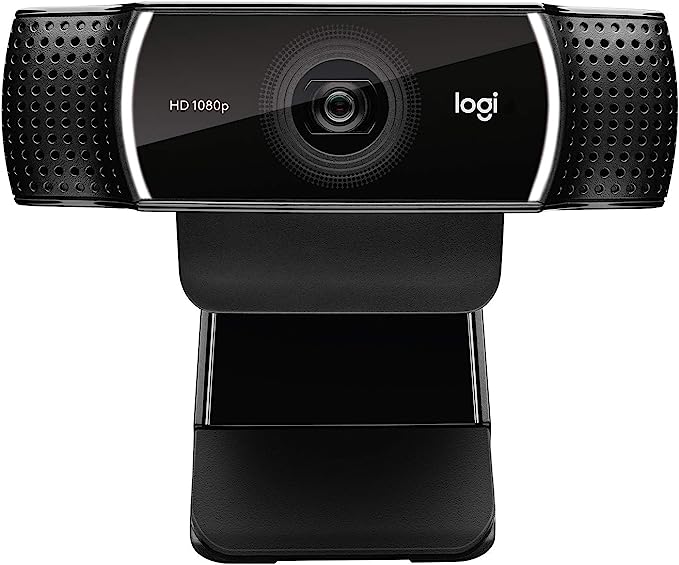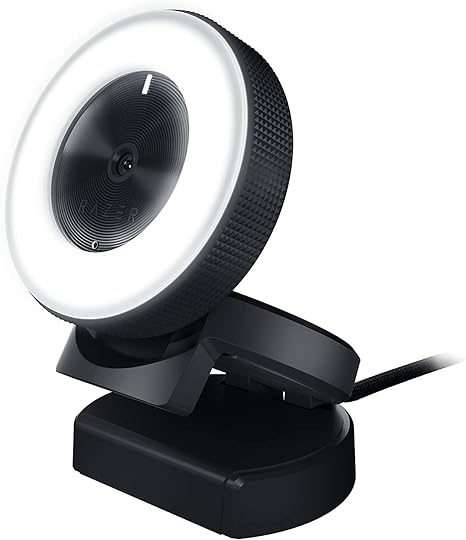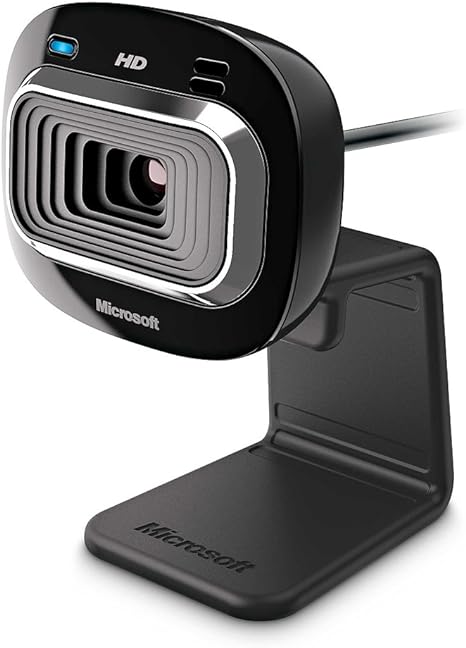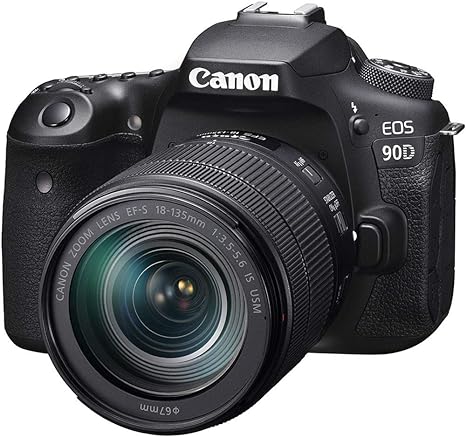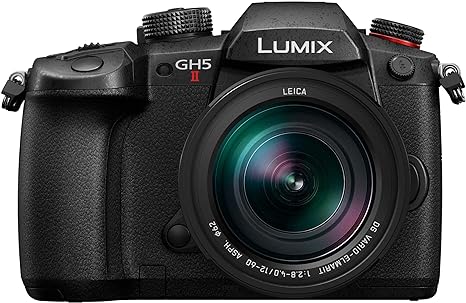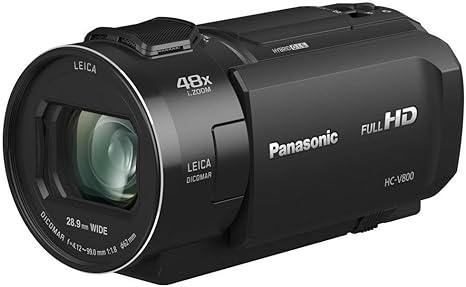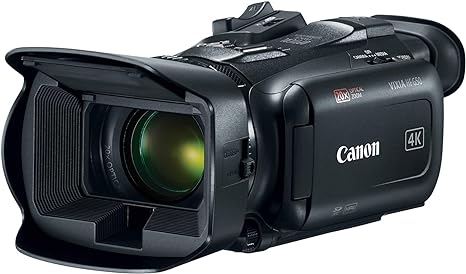Live streaming is becoming more popular than ever. This new way of sharing content enables you to interact live with your audience and provide a more “real” experience for the viewer.
The best camera for live streaming in 2024 will depend on your needs and budget. In this buyer’s guide, we cover the best options for all price ranges and situations.
If you are just starting with live streaming, you should also check out our Ultimate guide on how to become a live streamer.
| Camera (Amazon Link) | Camera Type | Maximum Resolution |
| Logitech C922x Pro Stream | Webcamera | 1080p at 30FPS |
| Razer Kiyo | Webcamera + Light | 1080p at 30FPS |
| Microsoft Lifecam HD-3000 | Webcamera | 720p at 60FPS |
| Canon EOS 90D | DSLR | 4K at 30FPS |
| Panasonic Lumix GH5 Mark II | DSLR | 4K at 60FPS |
| Panasonic HC-V800K | Camcorder | 1080p at 60FPS |
| Canon VIXIA HF G50 | Camcorder | 4K UHD at 30FPS |
| GoPro HERO9 Black | Action Camera | 5K at 60FPS |
| Panox V2 360 Action Camera | 360 Camera | 4K at 30FPS |
| Samsung Gear 360 Camera | 360 Camera | 4K at 30FPS |
Prep
Before you jump in and invest in a professional camera for streaming, you need to make sure you have the basics in place.
Good internet
When streaming, any equipment is useless without proper internet. You want to deliver live video to your viewers in good resolution and without buffering.
The key factor for uninterrupted streaming is the upload speed. Make sure you have at least 3-6 Mbps. You can use a tool like www.speedtest.net to measure your upload speed. Keep in mind, though, that the value can fluctuate depending on your internet connection, so it is a good idea to have a buffer.
Microphone
Proper audio is just as important as video quality. Even on the best live streaming cameras, built-in microphones are not ideal for sound quality. Invest in an external microphone, either a good headphone with a mic or a USB microphone like Blue Yeti.
Video Encoder
To be able to live stream through a DSLR or camcorder, you need an encoder to connect it like you would a webcam. Make sure the camera has an HDMI output to connect it to your encoder.
Good Lighting
To really get professional-looking video on your live streams, you need to get the right lighting setup. This might mean investing in some proper lighting equipment, but you could easily find inexpensive DIY solutions as well.
We have a guide on lighting for youtube videos, everything there applies to live streaming as well, so make sure to check it out.
What cameras are used for live streaming?
Any camera with a USB or HDMI output can be used for live streaming. The question will be what kind of camera delivers the best video and audio quality when recording live.
The most commonly used live streaming cameras are either Webcams or DSLR. But people also use Camcorders, Action Cameras, and even 360 cameras for live streams.
There are pros and cons with each type, and what kind of camera you choose will depend on your overall streaming setup, environment, and budget.
Webcameras (Webcams)
You really don’t need expensive equipment to start streaming. A simple webcam can get you started. Some are even built for live streamers.
In addition to being relatively inexpensive, you don’t need a video encoder, big tripods, and HDMI cables to connect a webcam. This keeps your setup cheaper and easy to set up. For those with limited space and power options available, this is an ideal option.
DSLR
DSLR are great cameras for stationary streaming. They are not as portable as a webcam, but they don’t have to be. A good DSLR shoots very high-quality videos and performs well even in low light conditions. They are ideal for most indoor setups. DSLR’s are famous for great manual controls to control every aspect of your image. Unlike a webcam, you can manually control things like aperture, white balance, and focus.
DSLRs have some limitations as they are not all built for streaming – though some on our list have certainly started to cater to this market. If you are streaming for long hours, this could cause problems with overheating and limited recording times. You might also have to invest in an external power source or spare batteries as battery time is limited.
Camcorders
Camcorders offer longer maximum recording times and comfortable video ergonomics, along with in-built lenses that often provide strong zoom ranges. Like DSLRs, they also provide manual controls to get the image exactly how you want it. Many also have LCD screens that flip towards the lens, so that you can monitor your image while addressing the camera.
Where camcorders lack is in sensor size. Generally, they have smaller sensors compared to DSLRs. This affects video quality, especially in low light conditions.
Action Cameras
You can use action cameras as well for live streaming. Just make sure they have an HDMI output so you can connect it to your PC. Action cameras enable you to live stream with high resolutions and excellent video quality, but they lack many of the control features present in DSLRs, leaving you with little flexibility in terms of lighting, focus and framing. Their appeal lies in their simplicity and wide angle lenses.
360o Live Streaming Cameras
If you have more ambitious streams in mind, it is possible to stream live in 360 videos. 360 live streaming is growing in popularity in the last few years. Mainly through Youtube and Facebook, but more platforms as well. It can be used to capture sports events, travel videos, and much more. This isn’t particularly useful for game streaming or studio setups, but for capturing environments on location, it can be a good option.
Best Webcams for Livestreaming 2024
Logitech C922x Pro Stream
This webcam is a go-to for streaming. It offers high-quality 1080p resolution at 30fps.
Even if you don’t have the best lighting setup, the C922x Pro Stream’s low light correction features can solve exposure issues in a dimly lit environment. It has a great background removal feature, note though that it works best when used with a greenscreen. It also comes with a built-in stereo microphone. Audio quality is limited, so it is better to pair it with an external mic.
Overall, this is a best seller and widely use in streaming. You can’t go wrong with the C922x Pro Stream if you are an entry-level streamer. If you, however, are looking to stream at 4k, you might want to look into other options.
PROS
CONS
Razer Kiyo
As we mentioned above, lighting is key to good video quality. Therefore, when streaming, make sure your face is lit up correctly. Razer Kiyo makes this a lot easier with a built-in ring light. The camera has controls to adjust the brightness of the LED light ring.
The camera itself offers a standard 1080p at 30 frames per second. The Razer Kiyo is Streamlabs certified and is compatible with OBS Studio and all the other recording software.
PROS
CONS
Microsoft Lifecam HD-3000
Microsoft Lifecam HD-3000 is the cheapest webcam option on this list, but it still offers decent video quality at 720p at 30fp. You can rotate the camera 360 degrees and easily mount it on a tripod or gimbal.
While it was mainly designed for Skype calls and personal use, the HD-3000 works for streaming as well. This web camera is a good choice if you are more budget-conscious but still want good quality image capture – particularly if you’re capturing audio through a separate microphone. You might get the most bang for your buck at its price.
PROS
CONS
Best DSLRs for Livestreaming
Canon EOS 90D
Spec Highlights:
- 4K at 30FPS, 1080 at 120FPS
- APS-C CMOS sensor with Dual Pixel AF
- Bundled with 18mm – 135mm lens
The Canon EOS 90D is one of the most widely used cameras for YouTubers and streamers alike. It offers a crisp 4K resolution at 30fps or 1080p at up to a blistering 120fps. It has a sophisticated and useful autofocus system with eye detection and 45 autofocus points that keeps it simple and easy to use.
Canon is great at making user-friendly cameras all around, and its no different with the Canon 90D. It offers easy to use manual controls with a touchscreen LCD. In conclusion, this is a top-rated camera for streaming.
PROS
CONS
Panasonic Lumix GH5 Mark II
This exceptional camera gives streamers the ability to stream with 4k at 60fps (to devices that allow it). It is also a popular option among many YouTubers witch a full-sized HDMI port that allows for live streaming. If you vlog or have times when you disconnect from the tripod to capture hand-held video, the GH5’s in-body image stabilization will help to reduce shakiness.
The sensor is a bit smaller than other competing mirrorless cameras. This does affect video quality slightly, but that won’t be noticeable in a streaming context. Also, despite its sensor size, Panasonic has managed to optimize capture to squeeze every ounce of light out of the micro four thirds sensor to deliver surprisingly capable low-light performance. The Mark II release also improves on the capture resolution of its predecessor, now offering 10-bit C4K recording for video pros, along with an improved 4K 60fps option for streamers. Excellent manual controls and great performance make this a solid choice in any video arsenal.
PROS
CONS
Best Camcorders for Livestreaming
Panasonic HC-V800K
The HC-V800K can shoot 1080p video at up to 60fps. It has a clean Micro HDMI port, so connecting it to your PC is straightforward. It also has built-in WiFi capabilities that can be great for streaming.
HC-V800K has a relatively large sensor (BSI MOS 1/2.5-inch sensor) for a camcorder and offers some impressive high-quality video recording, even in low light conditions. Its wind-shielded audio capture is also not bad, considering the small form factor. This raises the HC-V800K above most other camcorders of its kind.
The main thing missing from this camera is the ability to record in 4K. But it makes up for it with excellent image quality. In conclusion, HC-V800K is one of the best camcorders for streaming.
PROS
CONS
Canon VIXIA HF G50
This camera is targeted toward creators who need a bit more from their camera device. As with the HC-V800K, the VIXIA HF G50 also offers a 1080p resolution at 60p, but if you’re keen to stretch all the way up to 4K resolution (and have the data bandwidth to support that level of upload), the Canon will allow you to do that, at 30fps.
It has outstanding low light capabilities for a camcorder, along with a clean HDMI output to simplify its use as a substitute webcam in OBS setups, or similar. The VIXIA HF G50 is also a very robust and portable camera, featuring 5-axis image stabilization and a long battery life; this works exceptionally well for streaming setups that require camera movement.
Overall, the VIXIA HF G50 is excellent for streams and videos in general.
PROS
CONS
Best Action Cameras for Livestreaming
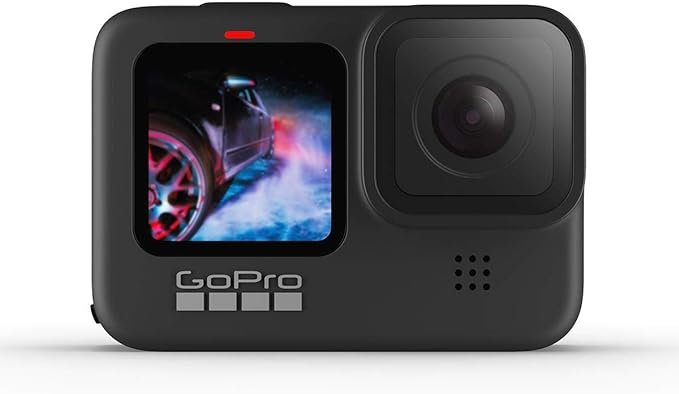
GoPro HERO 9 Black
GoPro manage to pack some impressive specs into their small packages. It’s for this reason that despite being known primarily as action cameras, many people choose to use them for live streaming of content that doesn’t require death-defying stunts. GoPro’s biggest advantage is how portable and compact their devices are, making it easy to set up on a desk and mount virtually anywhere – to the top of a monitor like a traditional webcam, to a wall, shelf or flexible stand. They also deliver stunning, wide-angle video quality and tend to perform surprisingly well in low-light conditions. It is true that most people don’t think of using a GoPro for streaming, but if you already have one lying around, it can be a great option for you.
It is not as easy to connect as other cameras, though. You will have to use a mini recorder to connect it to a computer, and it only has a micro HDMI port. But this minor issue is worth it when using this camera for streaming because of its quality.
PROS
CONS
Best 360 – Live Streaming Cameras
Panox V2 360 Action Camera
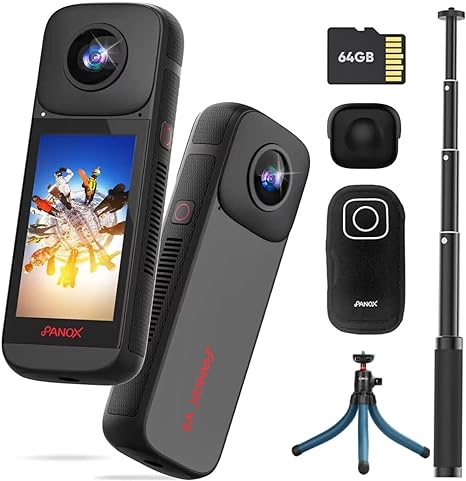
Spec Highlights:
- 360 video recording
- 4K recording
- Cloud Recording
This is a 360o action camera created with live streaming in mind. It even offers a built-in live stream capability for YouTube and Facebook. It can be easily integrated with Android smartphones, with its custom app providing AI editing capabilities.
It has a small and portable built, allowing you to do some more adventurous live streams.
PROS
CONS
Samsung Gear 360 Camera
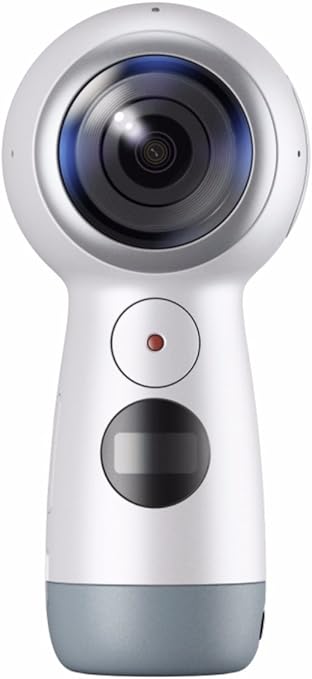
Spec Highlights:
- 360 video recording
- 4K resolution at 30FPS
- Stereo mic
This is a budget-friendly Gear 360 camera with great capabilities. For those with Samsung Galaxy smartphones, this devices offers seamless integration. It can shoot 4K video, and yet it is small and can easily fit in your pocket. It comes with a great companion app to get the most out of the camera features.
PROS
CONS
In Conclusion
There are countless options available to streamers in terms of image capture, but these are our choices for the top 10 best cameras for streaming at this point in time (March 2024). We hope that one of these options sounds like the right fit for your particular content production needs. But always remember, even if you are on a lower budget, never let the gear stand in the way of creating content, simply start with what you have and build from there. Good luck!
